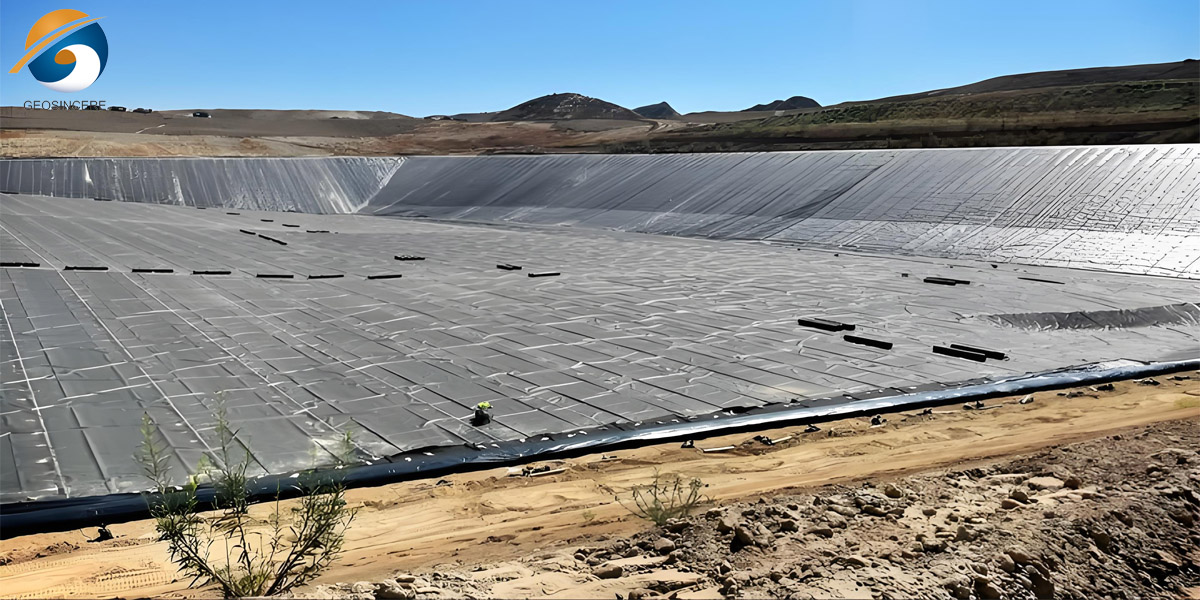How to Choose the Right Geomembrane for Agriculture During the Rainy Season?
With the intensifying global climate change, the rainy season is becoming more unpredictable—longer durations, heavier downpours, and extreme weather events are occurring with increasing frequency. These bring significant challenges to agriculture: waterlogging, soil erosion, nutrient loss, and outbreaks of pests and diseases, all of which severely affect farming efficiency and production quality.
Geomembrane, as an efficient and cost-effective waterproofing material, plays a crucial role in agricultural water management during the rainy season. It effectively blocks rainwater infiltration, controls soil moisture, reduces nutrient loss, and suppresses weed growth. However, with a wide range of geomembranes available in the market—varying in materials, thicknesses, and properties—choosing the right product for specific agricultural needs can be a challenge.
1. Major Agricultural Challenges During the Rainy Season
1.1 Waterlogging – Root Suffocation and Rotting
Problem: Excessive rainfall leads to high soil moisture, oxygen deficiency in root zones, and reduced nutrient uptake.
Impact: Many types of agricultural production, from grains to vegetables, are vulnerable to root rot and reduced yields due to prolonged saturation.
1.2 Soil Erosion and Nutrient Loss
Problem: Torrential rain washes away topsoil and fertilizers.
High-Risk Areas: Sloped farmlands, tropical rainforest regions (e.g., Southeast Asia, South America).
1.3 Pest and Disease Outbreaks
Problem: High humidity promotes fungal infections (e.g., blight, rust) and pests (e.g., snails, aphids).
Solution: Using geomembranes as surface covers reduces direct rain-soil contact, helping to lower disease incidence and protect farm environments.
1.4 Temperature Fluctuations
Problem: Cloudy, rainy days reduce soil temperature, hindering the growth of temperature-sensitive agricultural crops such as cotton or melons.
Solution: Black-colored geomembranes absorb sunlight and help maintain soil warmth.
2. The Role and Value of Geomembranes in Agriculture
Geomembranes are impermeable sheets made from high-polymer materials such as HDPE, LDPE, or PVC. Widely used in agriculture, environmental engineering, and water conservancy, they offer several key benefits during rainy seasons:
Waterproofing & Water Retention: Prevent rainwater infiltration and reverse seepage, protecting farmlands from flooding.
Soil Contamination Barrier: Isolate harmful substances from root zones, improving the safety of agricultural output.
Rainwater Harvesting: Enable efficient collection and storage of rainwater for later irrigation use.
Improved Field Efficiency: Compared to traditional plastic films, geomembranes provide better durability and resistance to weathering.
Structural Support: Commonly used in greenhouses, drainage channels, irrigation ponds, and other agricultural infrastructure.
3. Geomembrane Type Comparison
Type | Material | Features | Best Use Cases |
HDPE | High-Density Polyethylene | High tensile strength, excellent puncture resistance, superior waterproofing, long lifespan | Rainwater storage ponds, greenhouse bases, hillside farms |
LDPE | Low-Density Polyethylene | More flexible, cost-effective, easy to install | Mulch film alternative, temporary ground covers |
PVC | Polyvinyl Chloride | Budget-friendly, weldable, moderate aging resistance | Small-scale coverage, temporary chemical storage |
EVA | Ethylene-Vinyl Acetate Copolymer | Excellent flexibility and cold resistance | High-altitude or cold-climate farming areas |
HDPE geomembrane remains the most widely used material in agricultural applications, especially in rainy or flood-prone regions.
Key Performance Indicators:
Thickness (0.3mm–1.5mm): Thicker membranes offer greater puncture resistance and longevity.
UV Resistance: Essential for tropical or high-sunlight regions—UV-stabilized membranes last longer.
Permeability (≤10⁻¹¹ cm/s): Lower values indicate superior waterproofing.
4. Application Scenarios and Selection Guidelines
4.1 Farmland Drainage and Moisture Isolation
Purpose: Prevent prolonged waterlogging that harms crops and soil structure.
Recommended Product: HDPE membrane ≥0.75mm + drainage geotextile.
Installation: Install membranes in subsurface drainage systems or perimeter channels to direct excess rainwater.
4.2 Orchard Ground Cover
Purpose: Weed control and soil erosion prevention.
Recommended Product: 0.5mm black LDPE or composite membrane.
Installation: Lay around the tree base and secure with pegs to prevent wind displacement.
4.3 Vegetable Greenhouse Waterproof Layer
Purpose: Prevent seepage or water backflow within greenhouse foundations.
Recommended Product: 0.8–1.0mm HDPE geomembrane.
Design Tip: Extend beneath the greenhouse base, integrating with drainage systems to improve internal moisture control.
4.4 Rainwater Collection Pond Lining
Purpose: Harvest and store rainwater for agricultural irrigation.
Recommended Product: 1.0–1.5mm HDPE membrane.
Construction Tip: Combine with non-woven geotextile and seal joints using hot-welding for best performance.
4.5 Temporary Chemical or Fertilizer Containment Zones
Purpose: Prevent chemical leakage into soil and groundwater.
Recommended Product: Chemical-resistant PVC membrane.
Installation Tip: Ensure even surface preparation and wrinkle-free laying for tight sealing.
5. How to Choose Geomembranes Based on Local Climate Conditions
5.1 Temperature and UV Exposure
Tropical/Subtropical Regions → Use UV-stabilized HDPE membranes.
Cold or High-Altitude Areas → Choose EVA for flexibility and freeze resistance.
5.2 Rainfall Intensity and Frequency
Heavy Rainfall or Storms → Use ≥1mm thick membranes for durability.
Moderate Rainfall Areas → 0.5mm LDPE may be sufficient.
5.3 Soil Compatibility
Clay Soils → Prefer flexible membranes to adapt to ground movement.
Sandy Soils → Use puncture-resistant HDPE membranes.
5.4 Agricultural Lifespan and Production Goals
Long-Term Agriculture (e.g., orchards, tea plantations) → Choose products with ≥5-year durability.
Short-Term or Seasonal Farming (e.g., vegetables, legumes) → Cost-effective membranes with 1–2 year service life are ideal.
6. Summary: Offering More Than Just Plastic Sheets
As the rainy season approaches, we at GEOSINO are not just offering plastic sheeting—we’re providing complete agricultural protection systems. Our geomembrane solutions help farmers cut losses, reduce risks, and improve long-term agricultural productivity.
As a supplier, we aim to: Understand each region’s agricultural challenges → Deliver tailored membrane solutions.
Provide pre-sales technical consultation → Design complete “rainy season protection plans.”
Build trust through education → Share guides, real-world case studies, and videos across online and offline channels.
Final Word: Harness the Power of the Membrane – Protect Your Agriculture
Rainy season disruptions are growing more intense each year. Geomembranes are the silent protectors of modern farming. Trust in our materials and expertise—and let us help you build a stronger, safer foundation for agricultural success.
GEOSINO – Engineered for the Rainy Season. Designed for Growth.








